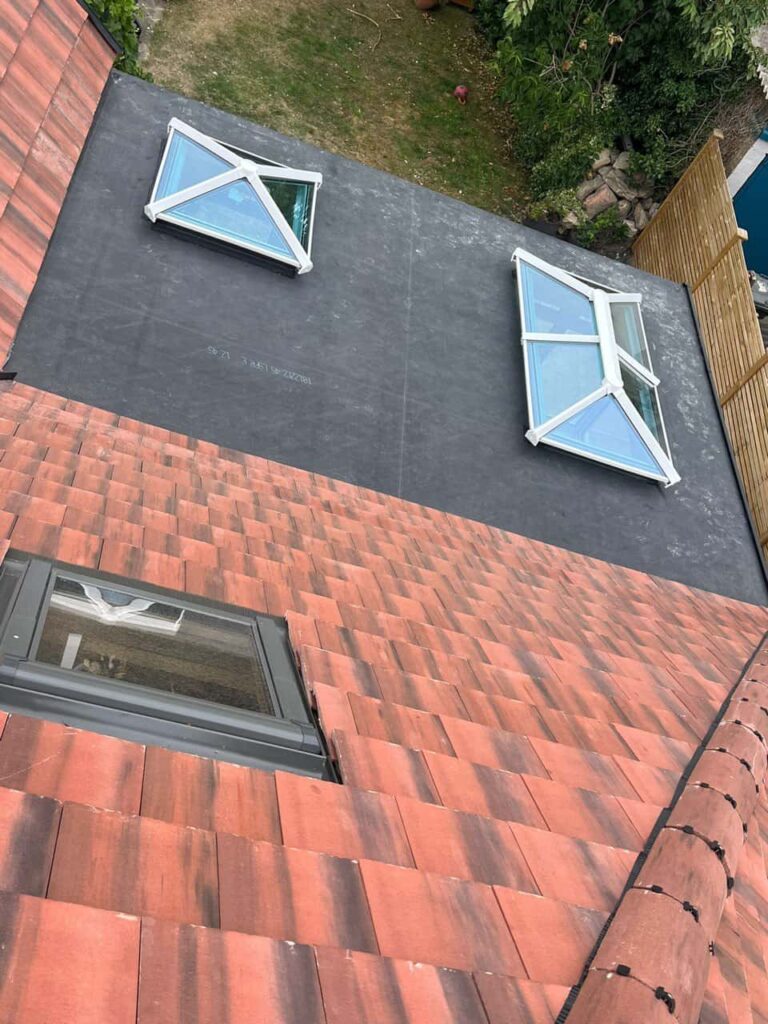Introduction
When people think of roofing, they usually focus on the large elements—tiles, slates, or flat roof systems. But it’s often the smaller details that play the biggest roles in long-term roof performance. One of those details? Leadwork. Subtle, precise, and incredibly effective, lead flashing protects your roof from water ingress where it’s most vulnerable.
At LS Roofing Chesham, we’ve seen first-hand how the right leadwork transforms a roof from functional to flawless. Whether you’re preserving a heritage home in Chesham or upgrading a modern build in Buckinghamshire, proper leadwork ensures everything stays dry, secure, and looking sharp. Let’s explore why this humble material is more valuable than many realise—and how it can safeguard your property for decades to come.
Key Takeaways
- Leadwork is essential for waterproofing junctions on a roof.
- Expert installation prevents future leaks and structural issues.
- Flexible and durable, lead adapts to all roof shapes and lasts for decades.
- Visually tidy leadwork adds to your roof’s overall finish and kerb appeal.
- LS Roofing Chesham delivers tailored leadwork across Buckinghamshire.
Why Leadwork Matters More Than You Think
Leadwork may be subtle, but its role in roofing is anything but minor. Wherever two roof surfaces meet—around chimneys, walls, dormers, or roof valleys—there’s potential for water to sneak in. Lead flashing forms a barrier that keeps water out, protecting the vulnerable joins that even the best roof coverings can’t seal on their own.
In towns like Chesham, where many properties combine traditional styling with modern roofing techniques, the flexibility of lead is a huge advantage. It can be shaped precisely to fit complex angles and contours, maintaining a tight seal in places where other materials would fail.
Best of all, lead is built to last. With correct installation and occasional maintenance, it can perform flawlessly for 50 years or more—making it one of the most reliable components on any roof.
Common Areas That Require Leadwork
Not all parts of a roof face the same challenges. That’s why leadwork is customised for different zones depending on how water flows, where joins occur, and what materials surround them.
Key Applications of Leadwork
- Chimney flashings – Protect the point where a chimney meets the roof, a high-risk area for leaks.
- Valley gutters – These carry water between two roof slopes and must remain sealed to prevent pooling and overflow.
- Dormer flashings – Guard the base and sides of dormer windows where rain easily collects.
- Step flashings – Used along pitched roof-to-wall joins, especially on extensions and porches.
- Apron flashings – Found at the base of vertical walls adjoining the roof, often behind parapets or roof terraces.
Each of these requires a different approach. The detail and quality of the leadwork here directly affects the roof’s ability to resist water damage.
Why Professional Leadwork is Worth the Investment
Leadwork is not just about applying a strip of metal and sealing it up. It’s a craft. If done poorly, it can lift, split, or trap water—causing damage rather than preventing it. That’s why skilled installation makes all the difference.
At LS Roofing Chesham, we install leadwork to exacting standards. We use the correct thicknesses and techniques depending on each part of the roof. We take time to dress the lead neatly and ensure water can flow freely off the roof without pooling behind flashings.
Benefits of Professionally Installed Leadwork
- Long-term protection against leaks in key roof junctions
- Reduced maintenance thanks to a high-quality, lasting seal
- Improved roof appearance with clean lines and finishes
- Fewer repairs needed over the life of the roof
- Better property value through enhanced performance and aesthetics
Professional leadwork protects more than just your roof—it safeguards your ceilings, walls, insulation, and internal finishes from slow, costly water damage.
How LS Roofing Chesham Approaches Leadwork
We take pride in our detailed approach to leadwork. Every job we complete in Chesham and throughout Buckinghamshire begins with an assessment of the roof’s structure, shape, and problem areas. We then design the leadwork to suit those conditions—no shortcuts, no guesswork.
Whether it’s installing flashings around a chimney on a heritage cottage or lining a valley gutter on a new extension, we deliver a level of finish that’s both practical and refined. That includes clean folds, tidy overlaps, and a seamless look that complements the roof’s design.
Local Conditions, Local Knowledge
Chesham’s climate brings its own challenges—cold winters, wet springs, and high winds that test every roof. Our experience with local properties means we understand how different roof types behave under these conditions, and we adjust our leadwork techniques accordingly.
Our leadwork is never rushed. We use traditional hand-dressing methods to form precise joints, ensuring everything fits snugly and drains properly. The result is a solution that performs well and looks great for years to come.
Conclusion
Leadwork might be one of the smallest elements of a roofing system, but its impact is huge. Done right, it delivers years of protection from leaks and water damage. Done poorly, it invites costly issues into your home.
At LS Roofing Chesham, we believe in doing things properly—especially when it comes to detail. Whether you’re planning a new roof, tackling a renovation, or just need targeted repairs, don’t overlook the importance of expert leadwork. Contact us today and let’s discuss how this small upgrade can make a big difference to your property.
Call us on: 01494 302 493
Click here to find out more about LS Roofing Chesham
Click here to complete our contact form and see how we can help with your roofing needs.

